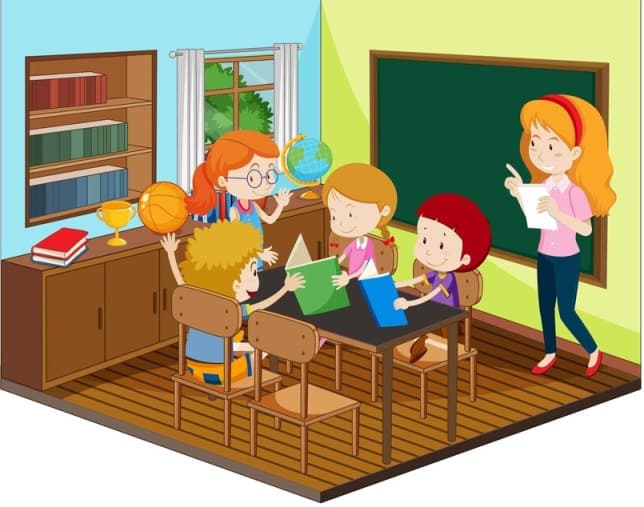Advantages of Think-Pair-Share include increased student engagement and improved critical thinking skills. Disadvantages involve time constraints and potential off-topic discussions.
Think-Pair-Share is a collaborative learning strategy used in classrooms. It encourages students to think individually, discuss with a partner, and then share with the larger group.
This method promotes active participation and deeper understanding of the material. It also helps shy or introverted students feel more comfortable speaking in a smaller group before addressing the entire class.
Teachers find it useful for assessing student comprehension in real-time. Despite its benefits, it can be time-consuming and may lead to digressions. Proper facilitation is necessary to ensure discussions remain focused and productive.
What is the Think-Pair-Share (TPS) strategy?
Think-Pair-Share is a teaching strategy. It was developed by Frank Lyman in 1981. He was an educator at the University of Maryland.
This method was designed to improve student engagement. It encourages students to think independently. Then they discuss their thoughts with a partner. Finally, they share with the larger group. This approach fosters active learning in classrooms.
Think-Pair-Share has three stages. First, students think about a question or problem. This is done individually. Second, they pair up with a partner. They discuss their thoughts and ideas. Third, they share their discussion results with the class.
This method helps students improve their communication skills. It also encourages critical thinking.
Read Also: Comparison Between Pedagogy And Didactic – Different Teaching Strategy
How does Think-Pair-Share Work?
Think-Pair-Share is a three-step collaborative learning strategy that enhances individual thinking, peer interaction, and group discussion. Here’s how it works:
Think:
The teacher presents a question or problem to the students. Each student takes time to reflect on the question individually, formulating their own thoughts or solutions.
They may write down their ideas or simply organize them mentally. This step ensures everyone has the opportunity to engage and think independently.
Pair:
Students pair up with a partner to share and discuss their ideas. This step allows them to exchange perspectives, refine their thoughts, and learn from one another.
Conversations often reveal new insights as students explain their reasoning and explore differences in understanding.
Share:
Each pair shares their combined ideas with the larger group, such as the entire class. This creates an opportunity for a collective discussion where various viewpoints are considered, misconceptions are addressed, and key points are synthesized by the teacher.
Benefits Of Think-pair-share
Think-Pair-Share offers numerous advantages for students and educators by promoting engagement, collaboration, and critical thinking. Below are the key benefits:
Encourages Active Participation
Every student has an opportunity to engage with the material by thinking individually, discussing in pairs, and contributing to the group discussion. This inclusivity ensures that even quieter or less confident students participate actively.
Enhances Critical Thinking
The strategy promotes deeper reflection and analysis. Students must think independently, explain their reasoning to a peer, and evaluate others’ perspectives, fostering critical thinking skills.
Builds Communication Skills
Pair discussions allow students to practice communicating their ideas clearly and listening actively to others, improving both verbal and interpersonal communication abilities.
Supports Collaborative Learning
Working in pairs encourages students to collaborate and learn from one another. It helps them recognize the value of teamwork and diverse viewpoints.
Improves Understanding and Retention
By processing information at multiple stages—individually, with a partner, and with the group — students are more likely to understand and remember the material.
Promotes Equity in Learning
Think-Pair-Share gives every student a voice, reducing the dominance of more vocal learners in classroom discussions and providing equal opportunities to contribute.
Provides Immediate Feedback
Teachers can observe and assess students’ understanding during the pairing and sharing phases, identifying misconceptions or gaps in knowledge early.
Adaptable Across Subjects and Grades
This strategy works well in various subjects and age groups, from simple brainstorming activities in elementary schools to complex problem-solving tasks in higher education.
Encourages Reflective Thinking
The “Think” phase gives students time to reflect on their knowledge and ideas before external influences, improving their self-confidence and independence.
Engages Students Actively in Learning
The interactive nature of Think-Pair-Share keeps students engaged, making lessons more dynamic and enjoyable.
Disadvantages of Think-Pair-Share Method
While Think-Pair-Share is a valuable teaching strategy, it has some potential drawbacks depending on the context and implementation. Below are some disadvantages:
Time-Consuming
The three-step process can take more time than traditional teaching methods. In a tight schedule or large syllabus, it may not always be practical.
Dependence on Partner Quality
The success of the “Pair” phase relies on both students actively participating. If one student is unengaged or struggles to contribute, the discussion may become one-sided.
Risk of Off-Topic Discussions
During the “Pair” phase, students might stray from the topic and engage in unrelated conversations, reducing the effectiveness of the activity.
Potential for Unequal Participation
Some students might dominate the conversation during the “Pair” or “Share” phases, leaving others with limited opportunities to express their ideas.
Classroom Management Challenges
In larger or less disciplined classes, the “Pair” and “Share” phases can become noisy and chaotic, making it difficult for the teacher to ensure productive discussions.
Pressure on Shy or Introverted Students
While the strategy aims to involve everyone, some shy or introverted students may feel uncomfortable sharing their thoughts, even in a one-on-one setting.
Difficulty in Assessing Individual Understanding
Teachers may find it challenging to evaluate each student’s understanding since the “Pair” and “Share” phases often involve collective or group responses.
Misalignment with Certain Learning Styles
Think-Pair-Share may not suit all learners, especially those who prefer solitary work or struggle with verbal communication.
Dependency on Clear Instructions
The success of Think-Pair-Share relies heavily on clear instructions from the teacher. Ambiguous or vague prompts can lead to confusion and reduce the effectiveness of the activity.
Examples of Think-Pair-Share Activities and Implementation in the Classroom
Here are a few examples of Think-Pair-Share activities across different subjects, along with a guide on how to implement them effectively:
Example 1: Science (Middle School)
Topic: States of Matter
Prompt: “What happens to the particles of a solid when it is heated and becomes a liquid?”
Implementation:
- Think: Ask students to reflect on the process of melting and think about the changes at a molecular level. They write down their answers individually.
- Pair: Students pair up and discuss their responses, comparing ideas and refining their understanding.
- Share: Each pair shares their conclusion with the class. The teacher facilitates the discussion, correcting misconceptions and summarizing key points.
Example 2: English Language Arts (High School)
Topic: Analyzing Character Development
Prompt: “How does the protagonist change from the beginning to the end of the story?”
Implementation:
- Think: Students individually reflect on the protagonist’s journey and write down specific examples from the text.
- Pair: Students discuss their ideas with a partner, citing evidence from the story to support their interpretations.
- Share: Pairs present their analysis to the class. The teacher encourages connections between ideas and highlights insightful observations.
Example 3: Mathematics (Elementary School)
Topic: Problem-Solving
Prompt: “If you have 24 apples and want to divide them equally among 6 friends, how many apples does each friend get?”
Implementation:
- Think: Students solve the problem individually, writing down their answers.
- Pair: Students pair up and explain their methods to each other, comparing calculations and clarifying steps.
- Share: Pairs share their solutions and methods with the class. The teacher reviews and confirms the correct approach, addressing common mistakes.
Conclusion
The Think-Pair-Share strategy is a powerful teaching tool that encourages active learning, collaboration, and critical thinking. Its structured approach ensures that all students have the opportunity to engage with the material, share their ideas, and learn from their peers.
The advantages, such as fostering communication skills, promoting inclusivity, and enhancing retention, make it a versatile method applicable across various subjects and grade levels.
However, like any teaching strategy, it has its challenges. Issues such as time constraints, off-topic discussions, and unequal participation can hinder its effectiveness if not properly managed. These disadvantages can be minimized through thoughtful planning, clear instructions, and effective classroom management.
When implemented well, Think-Pair-Share can transform a classroom into a dynamic and collaborative learning environment, making it an invaluable strategy for educators aiming to maximize student engagement and understanding.




